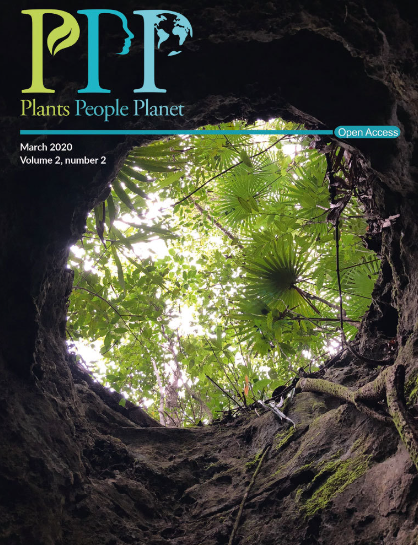A new framework for predicting and understanding flowering time for crop breeding
IF 3.6
2区 环境科学与生态学
Q1 BIODIVERSITY CONSERVATION
引用次数: 0
Abstract
Societal Impact Statement As the growing season changes, the development of climate resilient crop varieties has emerged as a crucial adaptation in agricultural systems. Breeding new varieties for a changing climate requires enhanced capacity to predict the complex interactions between genotype and environment that determine flowering time. Hundreds of experiments with observations of flowering, the environment and plant genetics were used to build a model that can predict when a variety of common bean is going to flower. This model will help breeders to explore the phenological characteristics of their germplasm, speeding up selection for climate adaptation. Summary There is an urgent need to accelerate crop breeding for adaptation to a changing climate. As the growing season changes, crop improvement programmes must ensure that the phenological characteristics of the varieties they develop remain well suited to their target population of environments. Meeting this challenge will require a clear understanding of how existing germplasm behave across Genotype ∗ Environment (G ∗ E) to enhance the efficiency of selection. Recent work calls for the development of simple models that can accurately simulate genotypic variation in key traits across target population of environments. Accordingly, we develop a simple machine learning framework for modelling time to flowering across G ∗ E and apply this to common bean in an equatorial target population of environments. Within this framework, we test three machine learning models and find that the best performing models display high levels of accuracy across G ∗ E. We advance understanding of the environmental drivers of flowering time in equatorial conditions by showing that thermal time and accumulated evaporation are powerful predictors of flowering time across all three models.为作物育种预测和理解开花时间提供了一个新的框架
随着生长季节的变化,发展适应气候变化的作物品种已成为农业系统的关键适应措施。培育适应气候变化的新品种需要提高预测基因型和决定开花时间的环境之间复杂相互作用的能力。数百个观察开花、环境和植物遗传学的实验被用来建立一个模型,该模型可以预测各种普通豆类何时开花。该模型将有助于育种者探索其种质的物候特征,加快适应气候的选择。迫切需要加快作物育种以适应不断变化的气候。随着生长季节的变化,作物改良计划必须确保他们培育的品种的物候特征仍然很好地适应其目标群体的环境。为了应对这一挑战,需要清楚地了解现有种质在不同基因型(G * E)环境中的表现,以提高选择效率。最近的工作要求开发简单的模型,可以准确地模拟环境中目标人群的关键性状的基因型变异。因此,我们开发了一个简单的机器学习框架,用于模拟跨G * E的开花时间,并将其应用于赤道目标环境群体中的普通豆。在此框架内,我们测试了三种机器学习模型,并发现表现最好的模型在G * e上显示出高水平的准确性。我们通过表明热时间和累积蒸发是所有三种模型中开花时间的有力预测因子,提高了对赤道条件下开花时间的环境驱动因素的理解。
本文章由计算机程序翻译,如有差异,请以英文原文为准。
求助全文
约1分钟内获得全文
求助全文
来源期刊

Plants People Planet
Multiple-
CiteScore
9.90
自引率
5.90%
发文量
81
审稿时长
12 weeks
期刊介绍:
Plants, People, Planet aims to publish outstanding research across the plant sciences, placing it firmly within the context of its wider relevance to people, society and the planet. We encourage scientists to consider carefully the potential impact of their research on people’s daily lives, on society, and on the world in which we live. We welcome submissions from all areas of plant sciences, from ecosystem studies to molecular genetics, and particularly encourage interdisciplinary studies, for instance within the social and medical sciences and chemistry and engineering.
 求助内容:
求助内容: 应助结果提醒方式:
应助结果提醒方式:


